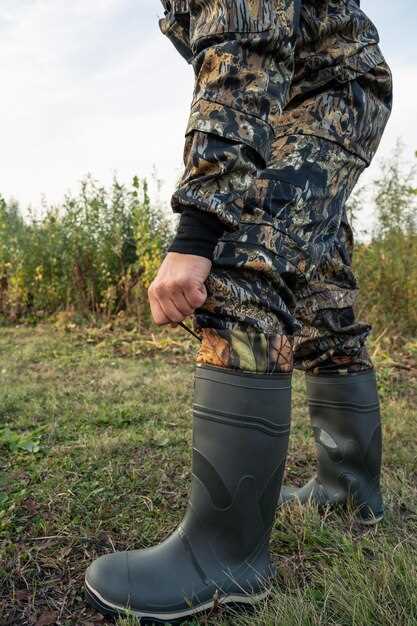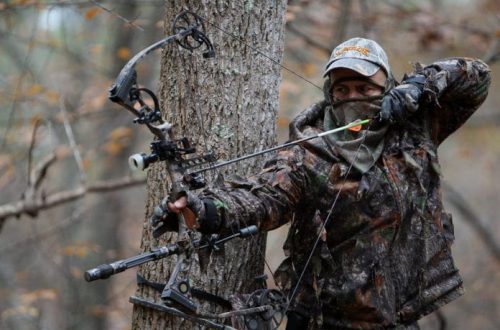
Hunting boots – how to choose the right pair

When it comes to hunting, the importance of selecting the right boots cannot be overstated. Comfort, fit, and specific hunting requirements all play critical roles in ensuring a successful and enjoyable experience in the field. A well-chosen pair of boots can mean the difference between a day filled with blistered feet and discomfort and one characterized by mobility and ease.
The first factor to consider is comfort. Hunting often involves long hours of walking or standing, so having boots that provide ample cushioning and support is essential. A variety of materials and designs are available, each offering different levels of insulation, waterproofing, and breathability. It’s crucial to find a pair that aligns with the conditions you’ll be facing in the wild.
Next, the perfect fit is vital for performing at your best during a hunt. Boots that are too tight can cause pain and fatigue, while those that are too loose may lead to a lack of control over your movements. Take the time to try on different sizes and styles, considering factors such as sock thickness and the type of terrain you’ll be traversing. Remember, the right fit will enhance your confidence and agility, allowing you to focus on the hunt itself.
Lastly, when choosing your hunting boots, consider your specific hunting style and environment. Different types of hunting may demand specialized designs, such as taller boots for wetlands or insulated ones for cold weather. Evaluate your needs based on the locations, seasons, and environments you typically encounter and make a selection that complements your outdoor pursuits.
Understanding Terrain-Specific Features for Optimal Performance
Choosing the right hunting boots requires an understanding of how different terrain affects your performance and safety. Each type of terrain presents unique challenges that should be addressed through specific features in your footwear. For instance, rugged and rocky landscapes demand boots with reinforced toe caps and sturdy outsoles for enhanced traction and protection against sharp stones.
In muddy or swampy areas, waterproofing becomes essential. Boots equipped with waterproof membranes not only keep your feet dry but also promote better comfort during prolonged wear. A proper fit is crucial; boots must be snug enough to prevent slipping but loose enough to allow for blood circulation, resulting in less fatigue.
Wet terrain also calls for styles that feature aggressive tread patterns. These provide stability and grip, minimizing the risk of slipping while navigating through unpredictable ground conditions. Comfort is not to be overlooked, as well-cushioned insoles can significantly impact your ability to remain active over long periods.
In cold and snowy environments, insulation plays a pivotal role. Opt for boots that offer thermal protection without sacrificing fit or comfort. A well-insulated boot can prevent frostbite and keep your feet warm, allowing you to focus on your hunting experience rather than discomfort.
When traversing forested areas, ankle support is vital. Boots that provide adequate support help prevent injuries caused by uneven ground and rolling ankles. Additionally, the material used in crafting the boot can impact breathability; select boots that balance insulation and airflow for optimal performance during varied activity levels.
For mountainous regions, lightweight options can facilitate better agility while climbing or descending steep slopes. A compressible sole can be beneficial for rapid adjustments on rocky terrains. Pairing all these terrain-specific features with the correct fit ensures that your hunting boots will perform effectively, allowing you to concentrate on your hunt rather than your footwear.
Assessing Fit and Comfort for Long Days in the Field

When choosing hunting boots, the fit and comfort play a crucial role in your overall experience during long days in the field. Ill-fitting boots can lead to discomfort, blisters, and fatigue, which can hinder your performance and enjoyment. Therefore, it’s essential to assess several factors to ensure you select the right pair.
Firstly, pay attention to the size. Hunting boots should fit snugly without being overly tight. It’s advisable to try them on at the end of the day when your feet are slightly swollen, mimicking the conditions you’ll experience in the field. Ensure there is enough room to wiggle your toes while still providing firm support to your heels.
Next, consider the arch support that the boots offer. A good arch support can prevent strain during prolonged wear, especially on uneven terrain. If you have specific foot conditions, consider utilizing orthotic insoles to enhance fit and comfort levels in your hunting boots.
The type of socks you wear also impacts comfort. Opt for moisture-wicking and padded hunting socks that fit well to avoid bunching or slipping, which can lead to discomfort. This combination with your hunting boots can significantly enhance your overall experience in the field.
Finally, take the time to walk around in the boots before making a purchase. This will help you identify any pressure points or discomfort that could become an issue during your hunting trips. Ensuring a proper fit and comfort is essential for maintaining focus and performance, allowing you to fully enjoy your time outdoors.
Evaluating Insulation and Waterproofing Options for Varying Conditions

When selecting hunting boots, insulation and waterproofing are critical factors that directly influence comfort and performance in different weather conditions. Insulation helps regulate body heat, ensuring that feet remain warm in cold environments. The type and thickness of insulation should be chosen based on the anticipated temperature range during hunting trips. Thicker insulation is ideal for colder climates, while lighter options suit milder conditions.
Waterproofing is equally important, protecting feet from moisture and keeping them dry during wet weather or in marshy terrains. Many hunting boots feature waterproof membranes that allow for breathability while preventing water penetration. Choosing boots with high-quality waterproof liners ensures durability and effectiveness over time.
Fit is another crucial element when considering insulation and waterproofing in hunting boots. A snug but comfortable fit assists in maintaining warmth, as loose boots can lead to heat loss. Additionally, a well-fitting boot will prevent blisters and discomfort, which are detrimental during long hunting excursions.
Ultimately, the right combination of insulation and waterproofing options depends on specific hunting environments and personal preferences. Evaluate your typical hunting conditions carefully, and select boots that provide the necessary warmth and dryness without sacrificing fit and comfort.



